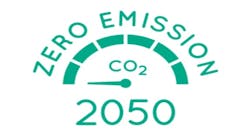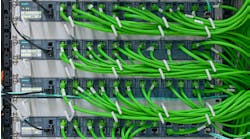By Hagen Heubach, vice president and global head of the automotive industry business unit at SAP SE
As the Paris Agreement has made clear, we must cut net global greenhouse gas (GHG) emissions to zero by midcentury. Countries including France, Sweden, and the United Kingdom have enshrined this goal into law. Germany is well on its way, and the Biden Administration has committed the United States to net-zero by 2050. OEMs including Volkswagen, GM, and Ford have pledged carbon neutrality by midcentury and recognize that it will take years of work to chip away at such an ambitious goal.
These companies see the writing on the wall: you can’t have a net-zero economy without net-zero companies—particularly ones in carbon-intensive businesses. The question, then, is how the auto industry might get there. The answer involves a couple of big steps.
The first is to build the business intelligence required to track carbon both within a given manufacturer and across the supply chain. The term “net-zero” implies a balance of carbon accounts, and a manufacturer can’t strike that balance without an exhaustive understanding of how much carbon it's generating through energy embodied in its products and (depending on the business model), emitted through the services provided by those products. More on this in a bit.
The second step is to leverage the knowledge gained by that business intelligence—that is, the extent of the negative balance of a firm’s carbon account—to justify actions to improve that balance. Those actions may include reassessing energy-intensive processes and energy-dense materials, expanding renewable energy use, enhancing recyclability, buying renewable-energy credits, and contributing to rainforest preservation, among others.
All this focuses on the supply chain. It’s the right place to start. The ERPs ubiquitous in the auto industry can be enhanced to accommodate new ledgers capable of precisely tracking the carbon inputs and outputs associated with countless components and processes. This work is already happening as SAP and others embed carbon tracking into existing logistics, parts-traceability, and other functions.
Industry players are also looking beyond their own walls. No single firm—particularly one whose products embody some 30,000 components sourced from the collective efforts of thousands of companies spanning the globe—can hope to achieve the carbon-accounting scope and precision required to support demonstrable carbon neutrality.
Meeting that challenge will demand open, interconnected, cross-industry networks for all participants in the supply chain, not a few of whom are competitors. It’s a daunting prospect, but one the German auto industry is already tackling through the Catena-X Automotive Network.
Catena-X partners include some of the biggest names in German business: BMW, Deutsche Telekom, Bosch, Siemens, ZF Friedrichshafen, Mercedes Benz, Volkswagen, SAP SE and many others. The alliance was created to foster uniform standards for the secure but transparent exchange of data and information among European auto manufacturers, suppliers, dealers, and software and equipment providers. Its foundation is the open, scalable, European cloud data infrastructure, Gaia-X.
Carbon tracking will, in the future, fit well into Catena-X functionality now being built, among other reasons, to support value-chain-wide sustainability. The intent is to enable the precise mapping of carbon emissions along the entire supply chain, including traceability of individual components. Catena-X will thereby establish a foundation for a net-zero auto supply chain in Europe. My hope is that the global auto industry follows our lead.
But the net-zero story doesn’t end with the supply chain—or maybe better, with the supply chain as the auto industry generally views it today. New business models will present new challenges to its carbon-tracking efforts. Take the example of Share Now, a European car-sharing service co-owned by Daimler AG and BMW.
The more than 15,000 vehicles that Share Now scatters around 16 cities in eight countries embody supply-chain-focused carbon tracking. In the coming decades, if Daimler and BMW retain ownership, they’ll have to ledger those carbon emissions in their net-zero accounting. And while the autonomous-vehicle fleets that turn auto owners into subscribers remain a dream, the thousands of engineers working the problem will surely have it cracked it before 2050, when net-zero will, in all likelihood, be the law of many lands. It’s hard to imagine that the auto industry would cede to others the vast opportunities that emerging mobility solutions and ancillary services—many of them carbon-emitting—will present.
As we lay the foundations of a net-zero auto industry, we must do more than ensure that we can track the carbon emissions of the value chain as we know it today. We must build net-zero data ecosystems such that they can accommodate business models that don’t yet exist, but are certain to emerge.


